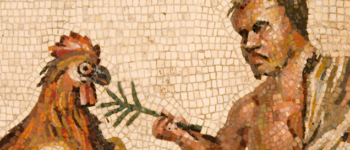1770s: Early NZ Colony Slaughtered, Eaten
May 4, 2019
By AHNZ
 DNA sequencing and radio-carbon dating analysis has now confirmed the existence of a colony of non-Maori who once lived on the north coast of the South Island. This is the area where some culturally advanced indigenous people are known to have lived who historians called, until recently, the Moa Hunter culture. This discovery is based on the dating of bones recovered from pre-historic Maori middens.
DNA sequencing and radio-carbon dating analysis has now confirmed the existence of a colony of non-Maori who once lived on the north coast of the South Island. This is the area where some culturally advanced indigenous people are known to have lived who historians called, until recently, the Moa Hunter culture. This discovery is based on the dating of bones recovered from pre-historic Maori middens.
“Two of the bones pre-dated regular European visits to New Zealand, which happened from 1803 onwards, yet overlapped with the arrival of Captain James Cook’s second voyage between 1773 and 1774.”
So Captain Cook, or other undocumented European visitors, supplied New Zealanders with chickens way back in the day. For a while, at least, I assume they were farmed successfully before being slaughtered to extinction. If a successful bird colony of domestic chickens had stuck it would have been a wonderful resource to these New Zealanders and may have even spared the moa from being similarly wiped out.
“Therefore, the study authors said, they were likely to be chickens liberated during that voyage.”
We can only speculate, for now, how the colony became destroyed. To have left enough remains to be detected it seems the introduced species thrived and multiplied for a time so what happened? Did some foul disease kill them off that the New Zealanders lacked the poultry-keeping expertise to combat? Did the chickens become associated with a disease or curse leading to superstitious extermination? Or were they simply a resource that became poorly managed in the same way moa were hunted to extinction after the fashion of Easter Islanders denuding their own home of resources?
“In the new study, led by Dr Jamie Wood of Landcare Research, researchers focused on bones in three sites on the northern coast of the South Island, which were ideal because they also contained material and bones of moa and other large birds that became extinct within 200 years of initial human settlement.”-Solved: The mystery of New Zealand’s ancient chooks; Herald, 2016
C18th is hardly an historian’s idea of “ancient” but I guess you want to sell newspapers don’t you NZ Herald?
It is accepted that Captain Cook left pigs in New Zealand, their descendants still thriving today, on his first voyage. Unlike chickens, the pigs might have survived better because piglets do not need to be hatched from eggs; Rats make short work of eggs.
—
image ref. Dwarf and Rooster, Roman mosaic; National Archaeological Museum. Naples. Italy.
 Like Comment Share
Like Comment Share





